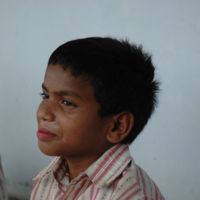
Ying A.
Unknown numbers of people have been held as slave laborers in China’s “Laogai” (labor reform camps). Human rights organizations claim that Falon Gong practitioners are often targeted for arrest, along with ethnic minorities, Catholics, Protestants, and Tibetans. By some estimates around 100,000 Falon Gong practitioners have been sent to the Laogai. Ying was one of these individuals. A student in France, she was imprisoned in 2000 while visiting her family in China.

Bin
Unknown numbers of people have been held as slave laborers in China’s “Laogai” (labor reform camps). Since 1999, the Chinese Communist party has executed a campaign of persecution against the spiritual practice of Falun Gong, which is seen as a “threat to social and political stability.” Practitioners have reported being detained and mistreated while in detention, including torture and forced labour. Human rights organizations claim that Falon Gong practitioners are often targeted for arrest, along with ethnic minorities, Catholics, Protestants, and Tibetans. Bin, a journalist for a newspaper that reported on Falun Gong, spent two years in the Laogai. It is estimated that 0.25% of the population of China are living in modern slavery. According to the Global Slavery Index, “China still faces an enormous issue with the trafficking of women and children for forced marriage and the sex trade, both internally and on a transnational level as criminal gangs become more sophisticated.”

Battis
Battis was enslaved in a carpet loom in Uttar Pradesh. He was liberated by activists from Bal Vikas Ashram (BVA), an organization that liberates and rehabilitates child slaves. He was found weaving carpets, wearing only underwear, and had been forced to weave rugs for 12-15 hours a day, beginning at 6am. From BVA he received medical care, counseling, literacy training, and basic rights education. More than 300,000 children are estimated to be trapped in India’s carpet industry in India, and there are also an estimated 500,000 children in the same industry in Pakistan. Most of India’s carpets are woven in Uttar Pradesh, where the majority of workers are low-caste Hindu boys. Some are lured into bondage by agents’ promises to their parents that they will receive good wages, and others are kidnapped. The boys are forced to work for no pay, for 10-18 hours a day, seven days a week. They are beaten, tortured, branded, kept half fed and half clad, and are usually made to sleep in the loom shed. Cuts and wounds are frequent.

Arvind
Arvind tells the story of a failed attempt at trafficking into the carpet looms of Uttar Pradesh. More than 300,000 children are estimated to be trapped in India’s carpet industry in India, and there are also an estimated 500,000 children in the same industry in Pakistan. Most of India’s carpets are woven in Uttar Pradesh, where the majority of workers are low-caste Hindu boys. Some are lured into bondage by agents’ promises to their parents that they will receive good wages, and others are kidnapped. The boys are forced to work for no pay, for 10-18 hours a day, seven days a week. They are beaten, tortured, branded, kept half fed and half clad, and are usually made to sleep in the loom shed. Cuts and wounds are frequent.